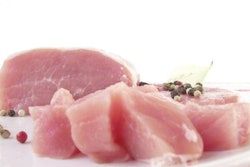
Feeding calcium below 1.5% in dairy cattle may hinder reproduction
Conventional dairy cattle feeding programs for calving cows may contain insufficient calcium, according to a new study from the University of Illinois.
Though the typical acidified prepartum diet for calving cows contains a calcium supplement, the supplement typically represents less than 1% of the overall diet. This may prevent overt symptoms of hypocalcemia, but a new study, published in the journal Theriogenology, suggests it’s insufficient to stave off long-term reproductive trouble.
The study determined that while these cattle may not show clinical symptoms, urine and blood tests suggested the cows were excreting more calcium than expected. When fed a diet containing twice the usual amount of calcium, the cows showed signs of increased uterine health and became pregnant sooner in subsequent breeding, according to Phil Cardoso, an associate professor at the University of Illinois and one of the study’s authors.
The cows that continued to receive the conventional 1% diet were 71% less likely to become pregnant during subsequent breeding.
Increased calcium in the diet also appeared to improve uterine tissue health, Cardoso said. The uterine cells in cows fed the high-calcium diet were bound together more tightly, potentially resulting in increased protection against infection, he said.
“Lots of people talk about leaky gut, were toxins go from the gut to the bloodstream, and we think that after calving, cows may experience a leaky uterus,” Cardoso said. “We think that calcium is very helpful to prevent that, and that’s probably why we saw cows with calcium had better pregnancy.
Cardoso said he’d like to pursue additional research on the efficacy of various calcium supplements, such as limestone or calcium carbonate. More research is also needed, he said, into how the phosphorus content of the diet influences the amount of calcium the cow absorbs.
In the meantime, he said, he suggests producers who plan to use an acidified diet increase the calcium content to 1.5-2% approximately three weeks before calving.
“If you don’t add the calcium,” he said, “it’s better not to do anything.”















